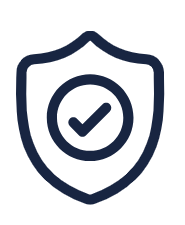Attack Surface Management (ASM): an ASM solution carries out continual vulnerability analysis from the perspective of an attacker, mapping the network to identify and prioritise vulnerabilities.
What is Cyber Security?

What is Cyber Security?
Cyber security has become as important to businesses, big and small, as locking the doors at the end of the day. For most of us, our operational stability is now dependent on the digital realm. In this post, we will look past cyber security as a blanket term and take a closer look at the measures you should take to keep the wheels of business turning and the digital door firmly locked.
Understanding Cyber Security and Cyber Resilience
Cyber security simply refers to the measures we must take against the threat posed by cyber attacks on our work systems and our data. These should be tailored to the specific security environment your business and sector exist within, building a clear strategy to repel, defend against and limit the impacts of attacks – your Cyber Resilience Strategy.

It is a common misconception that cyber-attacks are technically sophisticated; the vast majority are low-level attempts to disrupt systems and steal data carried out by individual hackers – and are therefore very possible to repel.
Most common types of Cyber Attack
Malware: inserting malicious programme or code – such as ransomware and trojans – into an IT system, typically with the aim of extracting ransom payments or stealing data including Ransomware and Trojans.
Phishing: most cyber-attacks involve malware, and a large proportion of these are delivered through phishing – the sending of fraudulent emails or text messages containing harmful links and content.
Denial of Service (DoS): floods a network with fake requests to undermine a system’s ability to support day-to-day work tasks, costing a business time and money.
Key Technical Solutions
Your cyber security strategy should include both people-driven best practices and high-quality technical solutions:
Anti-virus software: sits across your devices, blocking malicious content and working to eliminate any that infiltrates through continuous scanning.
Firewall: sits across your network to block unauthorised entry for malicious content, protecting you at the point of access.
Multi-Factor Authentication (MFA): forces users to verify their identity with an initial layer of confirmation, typically using their mobile device, rather than just entering a password. This is a relatively simple and unobtrusive way of ensuring that everyone using your IT is who they say they are.

Analytical Detection Tools:
Endpoint Detection and Response (EDR): live analytics and AI automation across end individual user devices. Where antivirus uses database of known threats, EDR actively analyses possible threats across your network.
Security Information and Event Management (SIEM): collects continual logs across your network, underpinning analysis and comparison against established rules to identify threats.
Security Orchestration, Automation and Response (SOAR): software sets which emphasise streamlined processes to facilitate rapid responses. Whereas SIEM focuses on analysis and data collection, SOAR is response-driven.
Key Security Practices
At inTEC, we know that people are the central component in any organisation’s IT. Your cyber resilience depends hugely on the practices and culture in place across your team – and continually developing these is therefore vital.
Security awareness training: your team need to be aware of the risks of working online, and empowered, through consistent training and skills development, to confidently be safe and secure in their work.
Password storage – the days of changing passwords every few months are graciously gone; cloud-based secure password storage solutions remove the risks of forgotten passwords without creating vulnerable sensitive data.

Backing-up Data – whether your data is on physical servers or in the Cloud, it should be backed up to a separate storage location, protecting you against critical data loss should any attack occur.
Principle of Least Privilege – this long-held principle of cyber security still applies: your staff should have access to as little sensitive data and systems as is necessary for them to complete their role to avoid creating unnecessary points of vulnerability.
Conclusion
As big businesses invest more and more into continuing to advance their security postures, everyday hackers are being forced to turn their attentions to small and medium-sized businesses across the UK. The perceived cyber forcefield around obscure, local businesses far from being household names does not exist now. Government figures show that 58% of small businesses experienced a cyber-attack last year – for those who had proper protections and practices in place, the impacts will broadly have been minimal.
Get in touch!
Cyber Security should not be a source of stress or fear for business owners; if it is, get in touch with inTEC today to hear more about our simple, streamlined solutions to help you work with confidence by day, and rest easy at night.
Please call 0345 565 1767 and ask for Owen Collar (Director of Cyber Security Services) or email owen.collar@intecbusiness.co.uk



